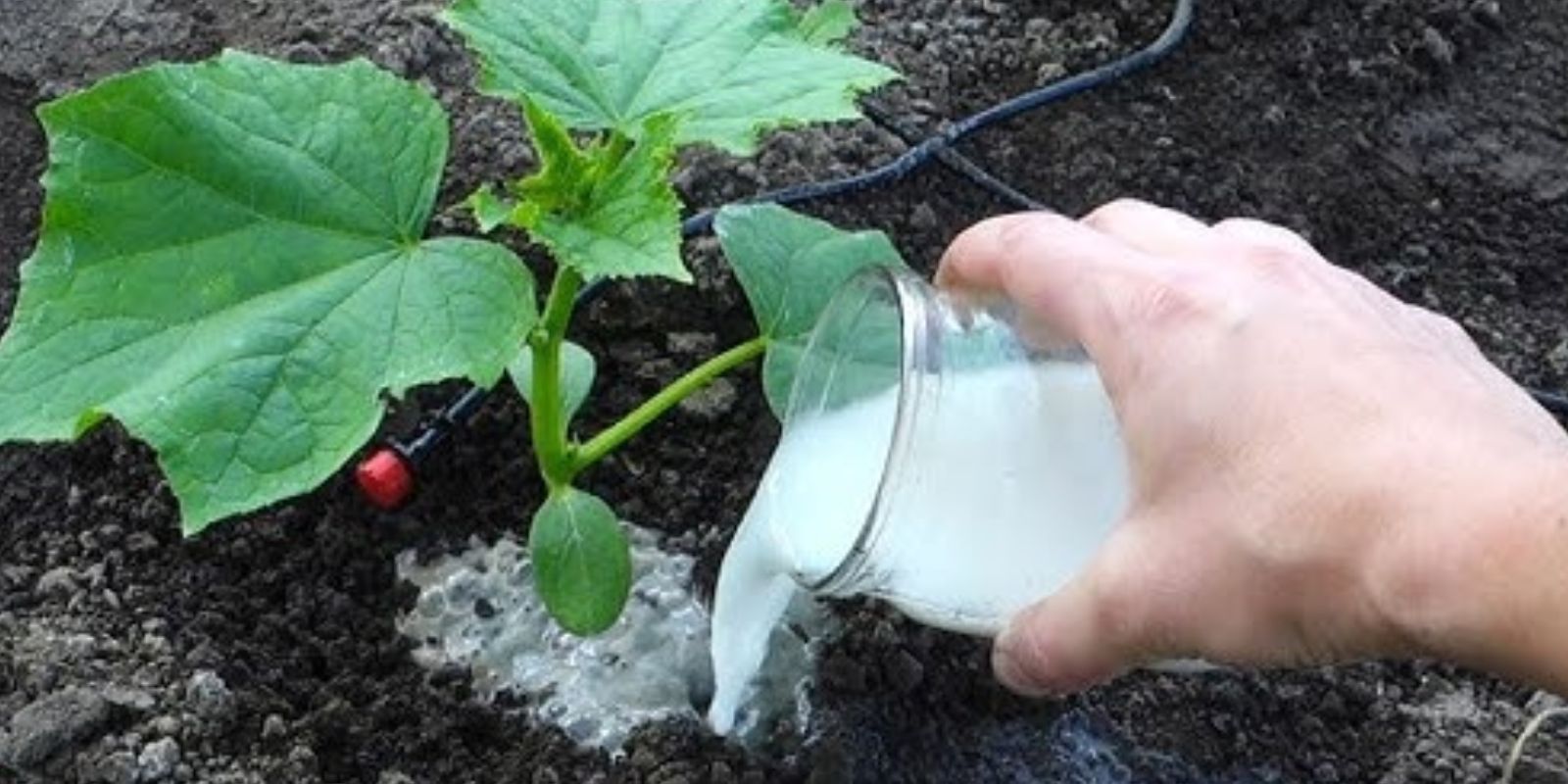Cucumbers are a beloved vegetable in many gardens, valued for their crisp texture and refreshing taste. However, even experienced gardeners can encounter challenges when growing cucumbers, particularly when plants seem to falter and show signs of distress. Fortunately, there’s a straightforward solution to rejuvenate your cucumbers and help them produce an impressive harvest. In this article, we’ll explore how to bring “dead” or struggling cucumbers back to life using a nutrient-rich approach that promotes rapid growth and bountiful fruiting.
Understanding Common Cucumber Problems
Before we dive into the revitalization process, it’s crucial to understand the potential issues that could be affecting your cucumber plants:
- Nutrient Deficiency: Cucumbers are heavy feeders and require a consistent supply of nutrients to thrive. A lack of essential nutrients can lead to poor growth and fruit production.
- Pests and Diseases: Cucumbers are susceptible to various pests, such as aphids and spider mites, as well as diseases like powdery mildew and downy mildew. These issues can weaken plants and hinder their productivity.
- Environmental Stress: Factors such as inadequate water, poor soil conditions, and insufficient sunlight can contribute to cucumber plant stress and poor performance.
Step-by-Step Guide to Reviving Cucumbers
Step 1: Diagnose the Problem
Start by assessing the condition of your cucumber plants:
- Check for Nutrient Deficiencies: Look for signs like yellowing leaves, stunted growth, or poor fruit development. Nutrient deficiencies often result in pale foliage and poor overall health.
- Inspect for Pests and Diseases: Examine leaves, stems, and soil for pests or disease symptoms. Look for visible insects, fungal growth, or unusual spots on leaves.
- Evaluate Environmental Factors: Ensure your cucumbers are receiving adequate water, sunlight, and proper soil conditions. Cucumbers need at least 6-8 hours of sunlight daily and consistently moist soil.
Step 2: Prepare a Nutrient-Rich Solution
To address nutrient deficiencies and stimulate growth, use a balanced, water-soluble fertilizer or a homemade compost tea:
- Balanced Fertilizer: Choose a water-soluble fertilizer with an even ratio of nutrients, such as 10-10-10 (nitrogen-phosphorus-potassium). Follow the manufacturer’s instructions for dilution and application.
- Homemade Compost Tea: Compost tea is a natural alternative that provides a range of nutrients and beneficial microorganisms. To make compost tea, fill a container with compost, add water, and let it steep for 24-48 hours. Strain the mixture before use.
Step 3: Apply the Solution to the Soil
- Fertilizer Application: Apply the prepared fertilizer solution directly to the soil around the base of the cucumber plants. Avoid getting the solution on the leaves, as it may cause burn or damage.
- Compost Tea Application: Water the base of the plants with the strained compost tea. This method helps enrich the soil with organic matter and nutrients.
Step 4: Monitor and Repeat
- Observation: Keep an eye on your cucumber plants over the next few weeks. Look for signs of improvement, such as greener leaves and new growth.
- Reapplication: Depending on the severity of the issue, you may need to reapply the nutrient solution every 2-4 weeks. Avoid over-fertilizing, as this can lead to nutrient imbalances and potential harm to the plants.
Step 5: Adjust Your Care Routine
To support continued recovery and growth, consider making the following adjustments:
- Watering: Ensure cucumbers receive consistent moisture. Water the plants regularly, especially during dry periods. Avoid allowing the soil to become waterlogged, as this can lead to root rot.
- Sunlight: Ensure cucumbers receive adequate sunlight. If the plants are shaded by other vegetation or structures, consider relocating or trimming to improve light exposure.
- Pest and Disease Management: Address any pest or disease issues promptly. Use organic pest control methods or fungicides as needed. Regularly inspect plants for signs of trouble.
Additional Tips for a Successful Cucumber Harvest
1. Soil Preparation: Ensure the soil is well-draining and rich in organic matter. Cucumbers prefer a slightly acidic to neutral pH (6.0-7.0). Amend the soil with compost or well-rotted manure before planting.
2. Proper Spacing: Give cucumber plants ample space to grow. Crowded conditions can hinder air circulation and increase the risk of disease. Space plants 12-18 inches apart in rows that are 36-48 inches apart.
3. Support Structures: Use trellises or supports to keep cucumber vines off the ground. This not only helps prevent diseases but also makes harvesting easier and improves fruit quality.
4. Pollination: Ensure adequate pollination for fruit set. Cucumbers are typically pollinated by bees. To attract pollinators, plant flowers that they find attractive, such as marigolds or sunflowers, near your cucumber plants.
5. Harvesting: Pick cucumbers regularly to encourage continuous fruiting. Harvest when cucumbers are firm and have reached the desired size. Overripe cucumbers can become bitter and may reduce the plant’s productivity.
Troubleshooting Common Issues
1. Yellowing Leaves: If leaves turn yellow, it may indicate over-watering, under-watering, or a nutrient deficiency. Adjust watering practices and check for pests or diseases.
2. Wilting Plants: Wilting can be caused by either under-watering or root rot. Ensure consistent moisture and proper drainage.
3. Poor Fruit Production: Inadequate pollination or nutrient imbalances can affect fruit set. Improve pollinator access and ensure a balanced nutrient supply.
Conclusion
Reviving struggling cucumbers and achieving a fruitful harvest can be accomplished with a thoughtful approach to care and nutrition. By diagnosing issues, applying a nutrient-rich solution, and adjusting your gardening practices, you can help your cucumber plants recover and thrive. This simple yet effective method will not only enhance plant health but also boost growth and productivity, ensuring a bountiful and satisfying harvest. Embrace these techniques, and watch as your cucumbers transform into a lush, productive part of your garden. Happy gardening!

